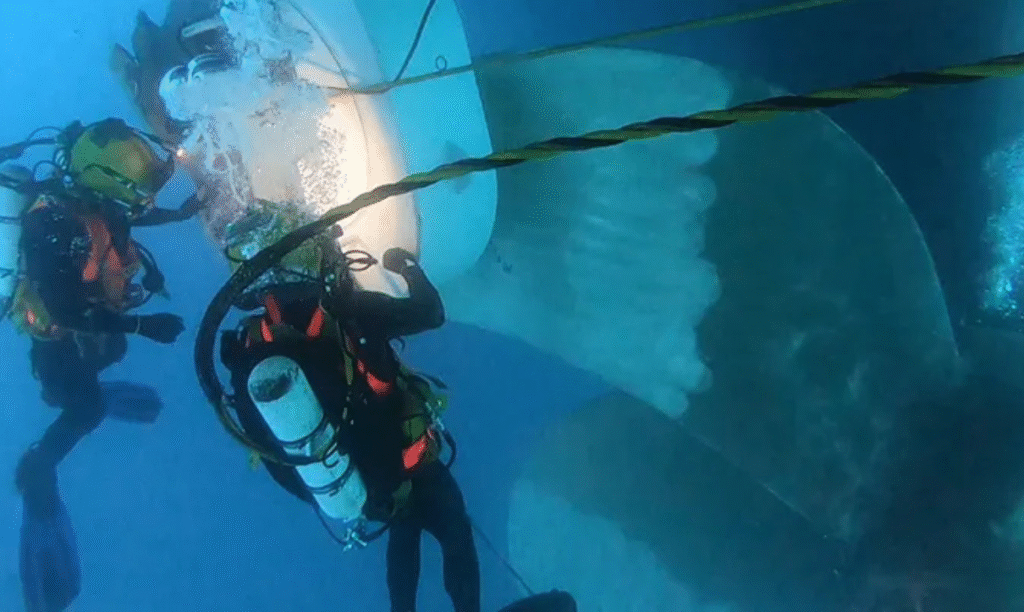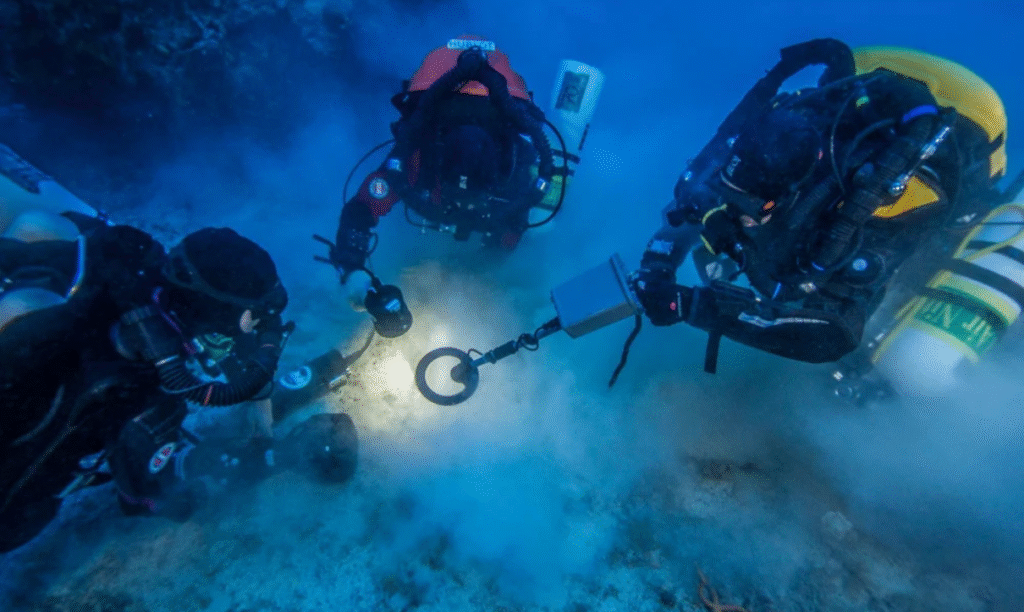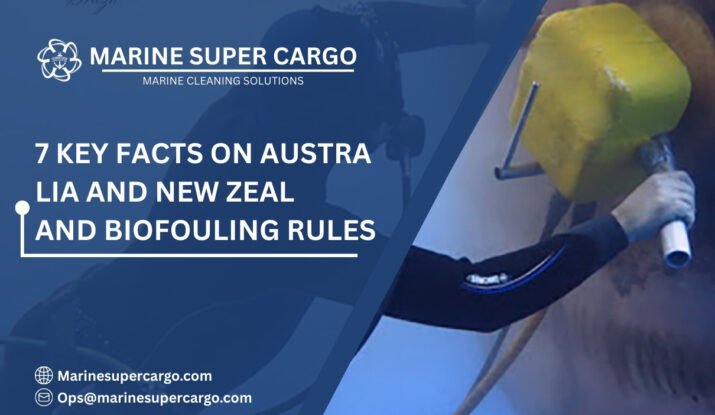If you operate vessels in the Pacific trade routes, you already know that Australia and New Zealand biofouling rules are a game-changer. These aren’t just technical guidelines—they’re binding regional restrictions with real financial and operational consequences.
Ships that fail to manage biofouling risk not only incur hefty delays and cleaning costs, but also possible denial of entry into ports. Think of it this way: just as customs checks ensure goods meet national standards, biofouling rules serve as a kind of ecological passport.
If a vessel’s hull carries marine “stowaways” like algae, mussels, or barnacles, it risks spreading invasive species into these fragile ecosystems. Australia and New Zealand biofouling rules, being island nations with rich but vulnerable marine biodiversity, enforce some of the world’s strictest hull cleaning regimes.
In this guide, we’ll break down what these rules mean, why they matter, and how you can avoid costly pitfalls while sailing smoothly through compliance.
Why Biofouling Became a Legal Priority
At first glance, a bit of slime or weed on a ship’s hull might seem minor. But under the microscope, biofouling reveals major issues:
- Invasive species threat: Organisms like mussels or starfish carried on hulls can colonize new environments, destabilizing local ecosystems.
- Fuel inefficiency: Biofouling increases drag, pushing fuel consumption up by 10–40%.
- Economic losses: More fuel means higher costs; invasive species can damage fisheries; delays at ports lead to contractual penalties.
Both Australia and New Zealand biofouling rules reacted to these concerns with strict laws. While their approaches differ slightly, their goal is united: to protect marine ecosystems while ensuring vessels remain compliant with international environmental standards such as the IMO Biofouling Guidelines and MARPOL Convention.

Overview of Australia and New Zealand Biofouling Rules
New Zealand
- Implemented the Craft Risk Management Standard (CRMS) in 2018.
- Requires incoming international vessels to demonstrate that they’ve managed biofouling on arrival.
- Acceptable proof includes:
- Cleaning within the last 30 days
- Regular cleaning schedules
- Approved treatment or documentation
Australia
- Rolled out updated biofouling management requirements for international ships in June 2022.
- Operates under the Department of Agriculture, Fisheries and Forestry (DAFF).
- Key compliance methods:
- International Anti-Fouling System Certificates
- Official biofouling management plans and record books
- Declarations made pre-arrival
Both countries coordinate but retain distinct frameworks, meaning operators must adapt strategies for each entry point.
What Ships Risk Without Compliance
Failing to follow Australia and New Zealand biofouling rules hits ships where it hurts most—time and money.
- Delays at Port: Vessels may be instructed to detour for cleaning before berthing.
- High Cleaning Costs: Emergency hull cleanings can exceed $200,000.
- Fines and Sanctions: Non-compliant vessels risk penalties.
- Lost Reputation: Port operators may flag frequent violators, impacting future business.
Imagine arriving just in time to deliver critical cargo—and then being told you’ll lose days waiting at anchor because your hull isn’t compliant. That’s exactly what these rules prevent.
Core Elements of the Biofouling Standards
Documentation
- Vessel must carry Biofouling Management Plans and Record Books, aligned with IMO guidelines.
- Transparent record-keeping is crucial to prove proactive measures.
Cleaning and Maintenance
- Regular underwater inspections and surface cleanings are mandatory.
- Operators must balance compliance with coating maintenance to avoid damaging protective layers.
Reporting
- Declarations are required before entering ports.
- False reports can lead to penalties and blacklisting.
✅ 4 Things to Check for Safety at Sea pic.twitter.com/dAxhJQ2i6U
— Marine Super Cargo (@Marinsupercargo) September 14, 2025
Case Studies: Compliance in Action
Case 1: New Zealand Port Inspection
A bulk carrier arriving from Southeast Asia produced CRMS compliance documentation showing hull cleaning was performed 20 days prior. The vessel was cleared with no delays, saving thousands in waiting fees. Also read about underwater hull cleaning in New Zealand.
Case 2: Australia Emergency Cleaning
An idle liquid natural gas carrier failed to maintain cleaning logs. Upon arrival in Sydney, biofouling was detected, forcing diversion for cleaning. Owners lost an estimated $500,000 in combined costs and delays. Also, read about underwater hull cleaning in Australia.
How Operators Can Ensure Compliance
To effectively navigate Australia and New Zealand biofouling rules, operators should:
- Create a Biofouling Management Plan: Follow IMO’s 2011 Guidelines.
- Record Everything: Maintain a detailed Biofouling Record Book.
- Schedule Regular Cleanings: Preferably every 60 days, especially before Pacific routes.
- Leverage Technology: Use remote-operated inspection drones to identify fouling early.
- Work with Specialists: Partner with expert cleaning providers like CleanShip.co for sustainable and compliant hull maintenance.
The Environmental Stakes
Both Australia and New Zealand biofouling rules are recognized for their biodiversity. Biofouling regulations are therefore not only commercial but national security measures for the environment.
- Australia invests heavily in protecting its Great Barrier Reef from invasive species.
- New Zealand focuses on protecting fisheries and aquaculture from potential ecological collapse.
Non-compliance affects global sustainability targets outlined by the International Association of Ports and Harbors (IAPH). Operators who comply not only avoid fines but also contribute to reducing emissions and safeguarding ecosystems.

Trends and Innovations Shaping the Future
Looking ahead, expect Australia and New Zealand biofouling rules to grow even stricter, supported by advanced technologies:
- AI-Drone Inspections: Faster hull surveys to spot fouling in real-time.
- Eco-Friendly Coatings: Hull paints designed to resist fouling while reducing toxins.
- Digital Port Clearances: Blockchain-based compliance proofs for efficient port entries.
- Regional Harmonization: Closer alignment between Australian, New Zealand, and IMO regulations for simpler cross-border compliance.
These innovations mean operators must stay agile—compliance will no longer be an afterthought but an integrated part of voyage planning.
Conclusion
Australia and New Zealand biofouling rules are more than regulatory hurdles—they are safeguards protecting oceans, optimizing fuel use, and reducing invasive species threats. Ignoring them risks delays, costs, and reputational damage, while compliance ensures smooth voyages.
Key Takeaways:
- Robust documentation is as vital as physical cleaning.
- Compliance saves time, money, and preserves marine ecosystems.
- Future regulations will push for greener, tech-enabled hull management.
For a smoother path through regulatory waters, partner with experts like CleanShip.co to maintain compliance while ensuring sustainable, cost-effective hull cleaning.
FAQs:
Q1. What are the Australia and New Zealand biofouling rules?
They are regional regulations requiring ships to manage, document, and prove hull cleaning to prevent invasive species and protect marine ecosystems.
Q2. How do these rules impact ship operators?
They increase demands for documentation and proactive cleaning but ultimately reduce delays, fuel costs, and risks of non-compliance penalties.
Q3. What documents prove compliance?
A Biofouling Management Plan, a Record Book, recent cleaning certificates, and anti-fouling system certificates are typically required.
Q4. Can ships be denied port entry under these rules?
Yes. If a vessel shows heavy fouling without proof of management or recent cleaning, it can be delayed or diverted.
Q5. What future innovations will affect compliance?
Expect AI-powered inspection drones, eco-friendly coatings, and digital clearance systems to streamline biofouling compliance in both regions.


